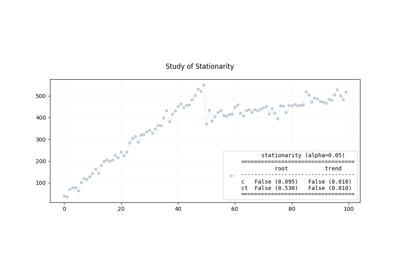pyamr.core.stats.correlation pyamr.core.stats.correlation ============================ ============================
Classes
- class pyamr.core.stats.correlation.CorrelationWrapper(estimator=None, evaluate=True)[source]
The Pearson Correlation Coefficient measures the linear correlation between two variables with a value within the range [-1,1]. Coefficient values of -1, 0 and 1 indicate total negative linear correlation, no inear correlation and total positive correlation respectively. In this study, the coefficient is used to assess whether or not there is a linear correlation between the number of observations (susceptibility test records) and the computed resistance index.
The Spearman Correlation Coefficient…
The Cross-Correlation ….
Methods:
as_summary([alpha])This method displays the summary.
evaluate([alpha])This method sets all the variables into this class.
fit(x1, x2, **kwargs)This method computes kendall for monotonic increase

